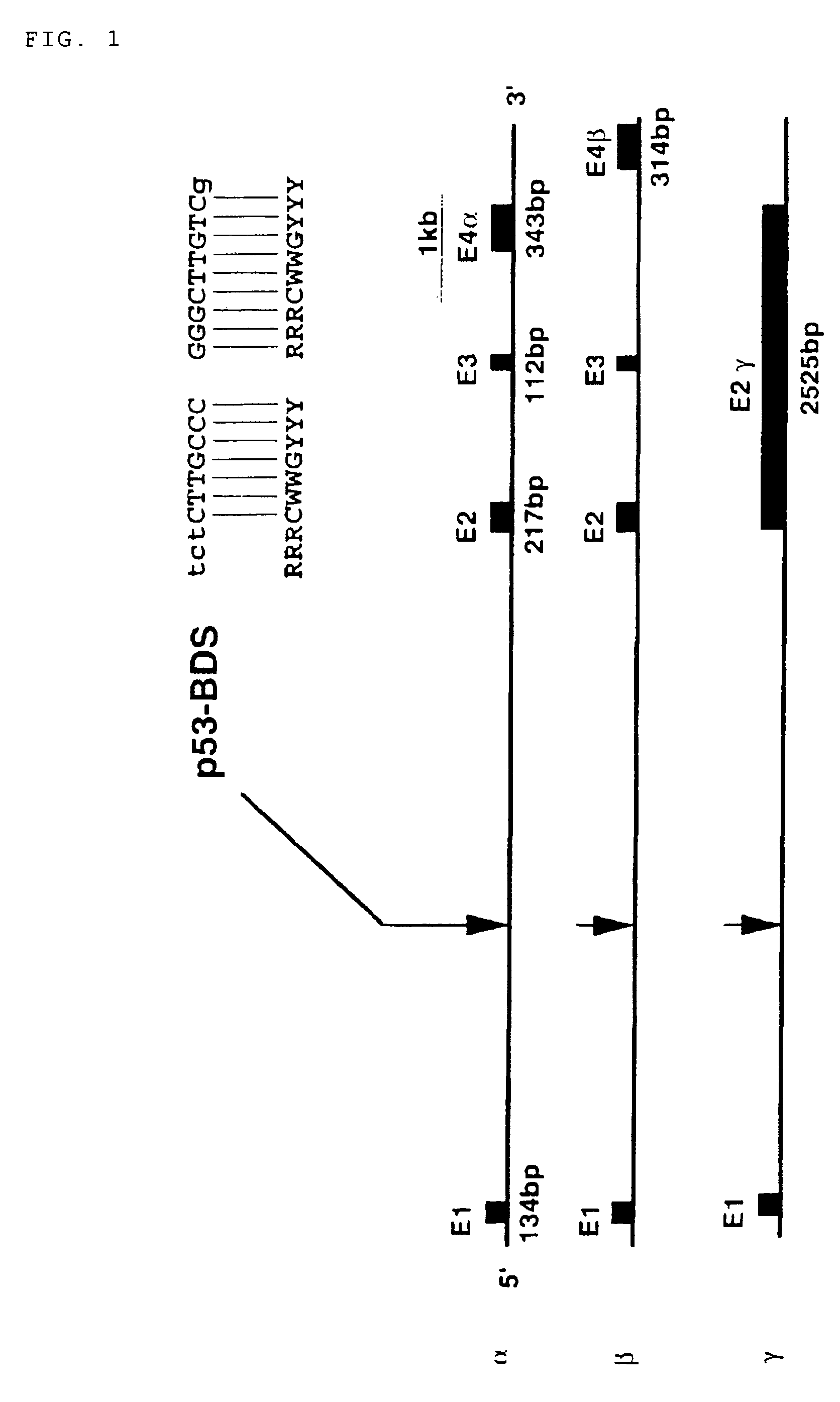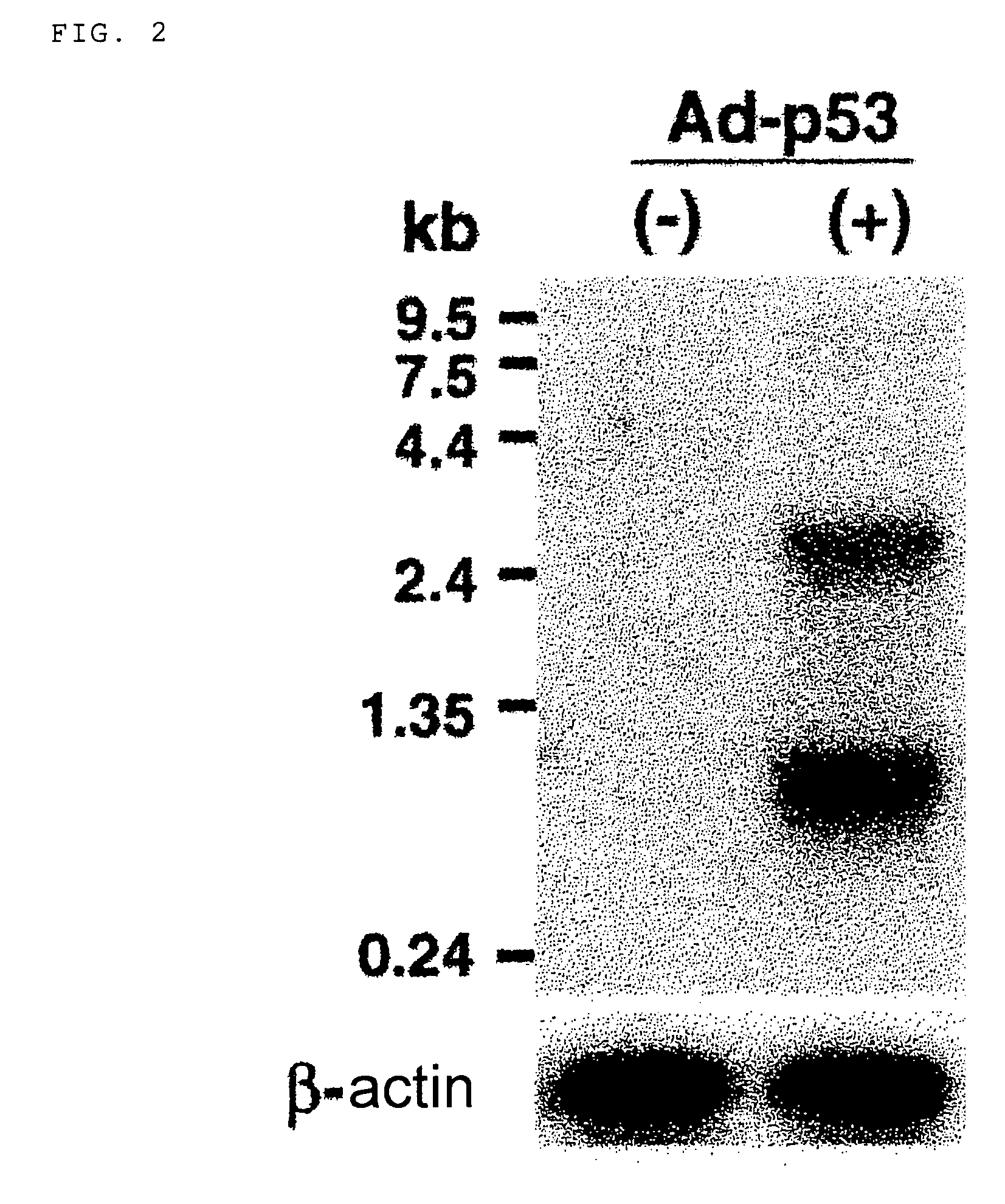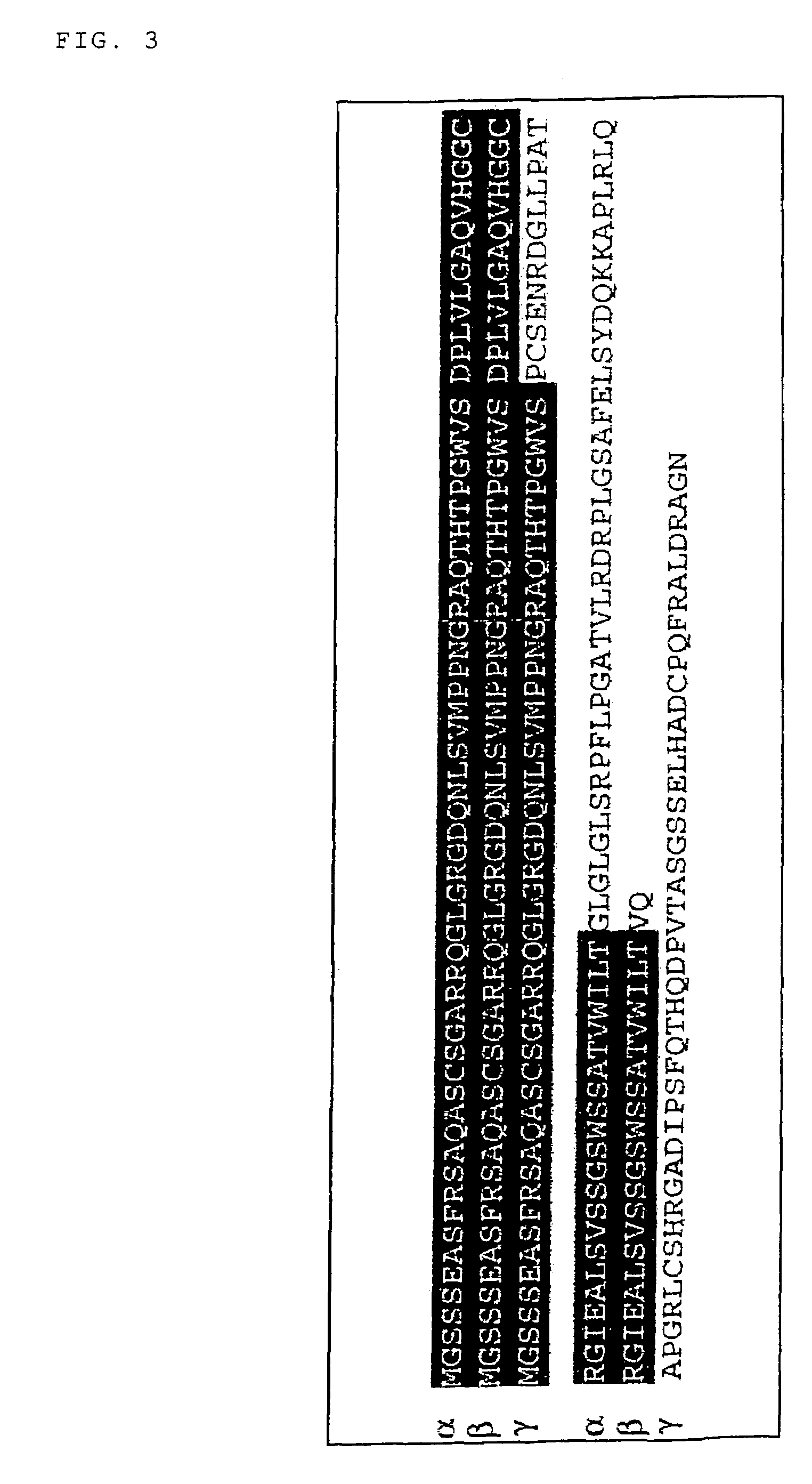P53 dependent apoptosis-associated gene and protein
a p53-dependent, apoptosis-associated technology, applied in the direction of depsipeptides, peptide/protein ingredients, fungi, etc., can solve the problem that the mechanism of p53-induced apoptosis is not sufficient to explain the mechanism of p53-induced apoptosis, and the mechanism of cell growth inhibition or apoptosis is not known
- Summary
- Abstract
- Description
- Claims
- Application Information
AI Technical Summary
Benefits of technology
Problems solved by technology
Method used
Image
Examples
example 1
Isolation of a Novel p53-inducible Transcription Unit
[0136]The present inventors isolated a number of human genomic sequences, whose transcription was presumably activated by p53, using a yeast enhancer trap system (p53-target site; Tokino et al. Hum. Mol. Genet. 3: 1537-1542, 1994). The inventors determined the nucleotide sequence of a 190-bp DNA fragment, corresponding to one of the above-described sequences (clone TP53-41 in Tokino et al., Hum. Mol. Genet. 3: 1537-1542, 1994), and found a putative p53-binding sequence (BDS) within the fragment (FIG. 1). To isolate a larger genomic region comprising the fragment, the 190-bp DNA fragment comprising a p53-target site was radiolabeled, and used as a probe for screening a human cosmid library consisting of 106 colonies. A cosmid designated as TP53-cos38 was isolated by the screening, and then subjected to FISH analysis. FISH analysis was performed using the cosmid clone TP53-cos38 as a probe according to the method described in Inazaw...
example 2
Isolation of the p53AIP1 Gene
[0139]In order to isolate a full length cDNA of the above-described DNA fragment, glioma cells, U373MG, were infected for 48 hr with a replication-defective adenovirus expressing wild-type p53 (Ad-p53), and then poly(A)+RNA was isolated from resulting cells. Northern blotting analysis using the 474-bp cDNA fragment as a probe was performed as follows.
[0140]Poly(A)+RNA (3 μg) extracted from U373MG cells infected with Ad-p53 was separated by electrophoresis on a 1% agarose gel containing 1×MOPS and 2% formaldehyde, and transferred to a nylon membrane. The RNA blot was hybridized with a random-primed 32P-labeled p53AIP1 cDNA probe or β-actin in 5×SSPE / 10×Denhardt's / 2% SDS / 50% formamide at 50° C., washed in 0.1×SSC / 0.1% SDS at 65° C., and then subjected to autoradiography at −80° C.
[0141]The analysis detected 0.8-kb and 2.7-kb transcripts whose transcription were strongly induced in U373MG cells by infection with Ad-p53 (FIG. 2). Northern blotting analysis u...
example 3
p53AIP1 as a Novel Target-Molecule for p53
[0143]In order to determine whether p53 was able to bind to oligonucleotides corresponding to the BDS sequence in intron 1 of the p53AIP1 gene, electrophoretic mobility shift assay (EMSA) was performed as described below. First, the following oligonucleotides were designed:
[0144]
(oligomer 1S, SEQ ID NO:9)5′-TCTCTTGCCCGGGCTTGTCG-3′;(oligomer 1A, SEQ ID NO:10)5′-CGACAAGCCCGGGCAAGAGA-3′.
and
[0145]Next, the oligomers 1S and 1A were annealed, and labeled with [γ-32P] DATP. H1299 lung carcinoma cells (obtained from ATCC) were infected-with Ad-p53. Nuclear extracts were prepared from these cells, and incubated with 0.5 μg of sonicated salmon sperm DNA, EMSA buffer (consisting of 0.5×TBE, 20 mM HEPES (pH 7.5), 0.1 M NaCl, 1.5 mM MgCl2, 10 mM dithiothreitol, 20% glycerol, 0.1% NP-40, 1 mM PMSF, 10 μg / ml pepstatin, and 10 μg / ml leupeptin), and the 32P-labeled double-stranded oligomers for 30 min at room temperature. In some cases, the nuclear extracts ...
PUM
 Login to View More
Login to View More Abstract
Description
Claims
Application Information
 Login to View More
Login to View More - R&D
- Intellectual Property
- Life Sciences
- Materials
- Tech Scout
- Unparalleled Data Quality
- Higher Quality Content
- 60% Fewer Hallucinations
Browse by: Latest US Patents, China's latest patents, Technical Efficacy Thesaurus, Application Domain, Technology Topic, Popular Technical Reports.
© 2025 PatSnap. All rights reserved.Legal|Privacy policy|Modern Slavery Act Transparency Statement|Sitemap|About US| Contact US: help@patsnap.com



